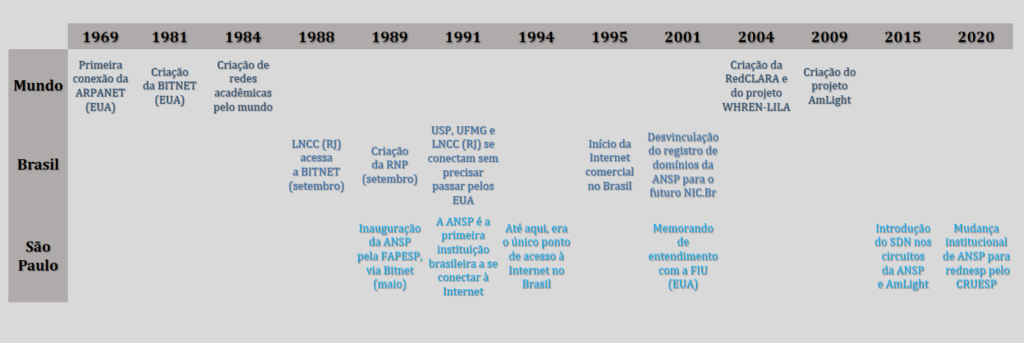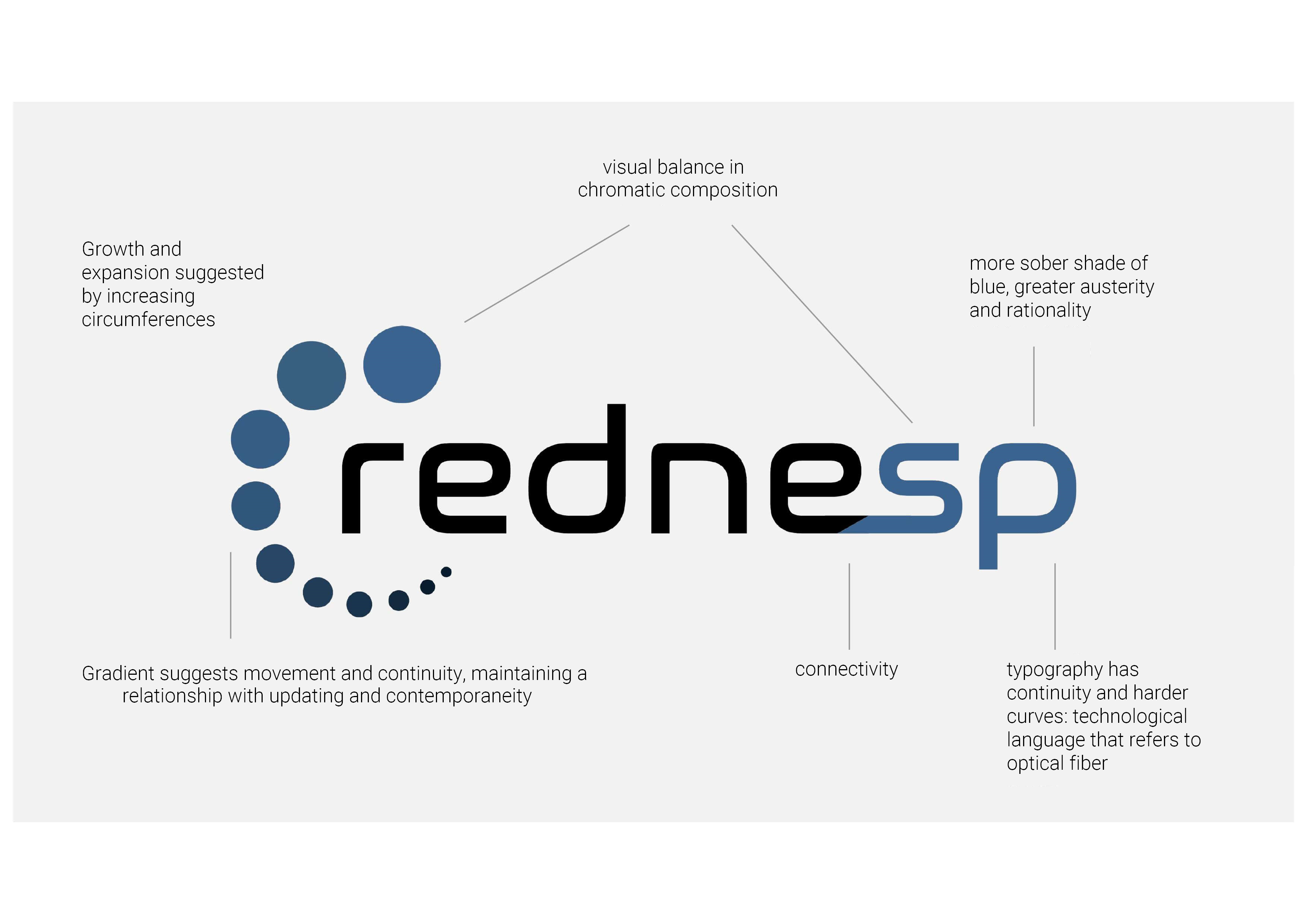About rednesp
Few people know, but the internet that professors, staff and students access at colleges and universities around the world is not the same as that used by ordinary users, at home or at work.
In general, each country has its own “academic network”, a high-speed network specifically for research and education areas, with traffic capacity superior to the commercial internet and independent of it, even though working together with its operators.
Although generally having national coverage, academic networks can also extrapolate state boundaries in a regional/continental configuration, or, in specific cases, have a sub-national dimension.
It is the case, in Brazil, of the State of São Paulo, which for accounting for about 50% of the national scientific production (data from FAPESP), has sufficient demand to have its own academic network, known as rednesp (Research and Education Network of São Paulo).
rednesp Mission
The rednesp yesterday and today
Few people know it either, but the internet as we know it today had its first embryo in the United States of America (USA) in the late 1960s, as an academic-military project that aimed to connect geographically distant universities.
In Brazil, after several projects and initiatives since the 1970s, it was in March 1989 that a network of five academic institutions in the State of São Paulo (FAPESP, USP, Unicamp, Unesp and IPT) connected to Bitnet - predecessor of Internet - in Chicago, USA, thus making ANSP (today rednesp) the first interinstitutional academic network in Brazil.
First Brazilian institution also to connect to the Internet in 1991, and the only access point to this network in Brazil until 1994, ANSP was the core of the Brazilian Internet until its commercial opening, when ANSP gradually directed its efforts exclusively for the academic area.
Funded by FAPESP since its beginning, rednesp connects today 36 research and education institutions in the State of São Paulo (among themselves and abroad), based on cooperation with international academic consortia and networks such as AmLight, RedCLARA and GNA-G.
In this international plan, rednesp is co-responsible for managing a 100G fiber optic ring between São Paulo, Miami (USA) and Santiago (Chile), but the network continues to grow: in 2019, the capacity between São Paulo and Miami has already been increased by more 200G, as well as a direct link between Brazil and Africa was opened in 2020.
Also in 2020, and aiming at the institutionalization of the project at the initiative of FAPESP, the coordination of the old ANSP started to be carried out by an executive committee linked to the Council of Rectors of the State Universities of São Paulo (CRUESP), being then renamed as rednesp (Research and Education Network of São Paulo).
Thus, carrying a long history and articulating great partnerships in Brazil and abroad, rednesp manages to provide a high-capacity and state-of-the-art internet to the robust scientific community of the State of São Paulo, also cooperating for the viability of academic internet throughout the Brazilian territory.
The rednesp's visual identity: dynamism and technology
Movement, speed and connection are at the heart of rednesp. They are fundamental meanings to be generated by its visual identity, which represent the quality of everything it builds and offers.
The highest technology in the transmission of data between researchers is a strong value proposition, which occupies the centrality of the guidelines for this construction.
This connection, with speed, quality and robustness, is what allows the expansion of ideas, knowledge and science; the exchange between São Paulo, Brazil and the world strengthens relations and makes the field grow.



